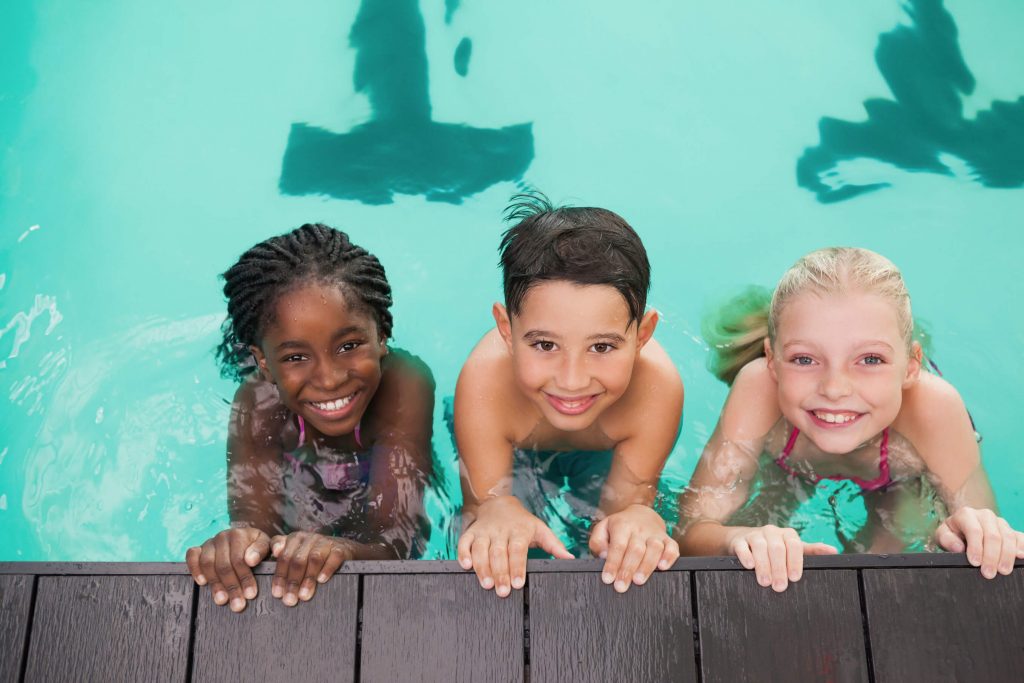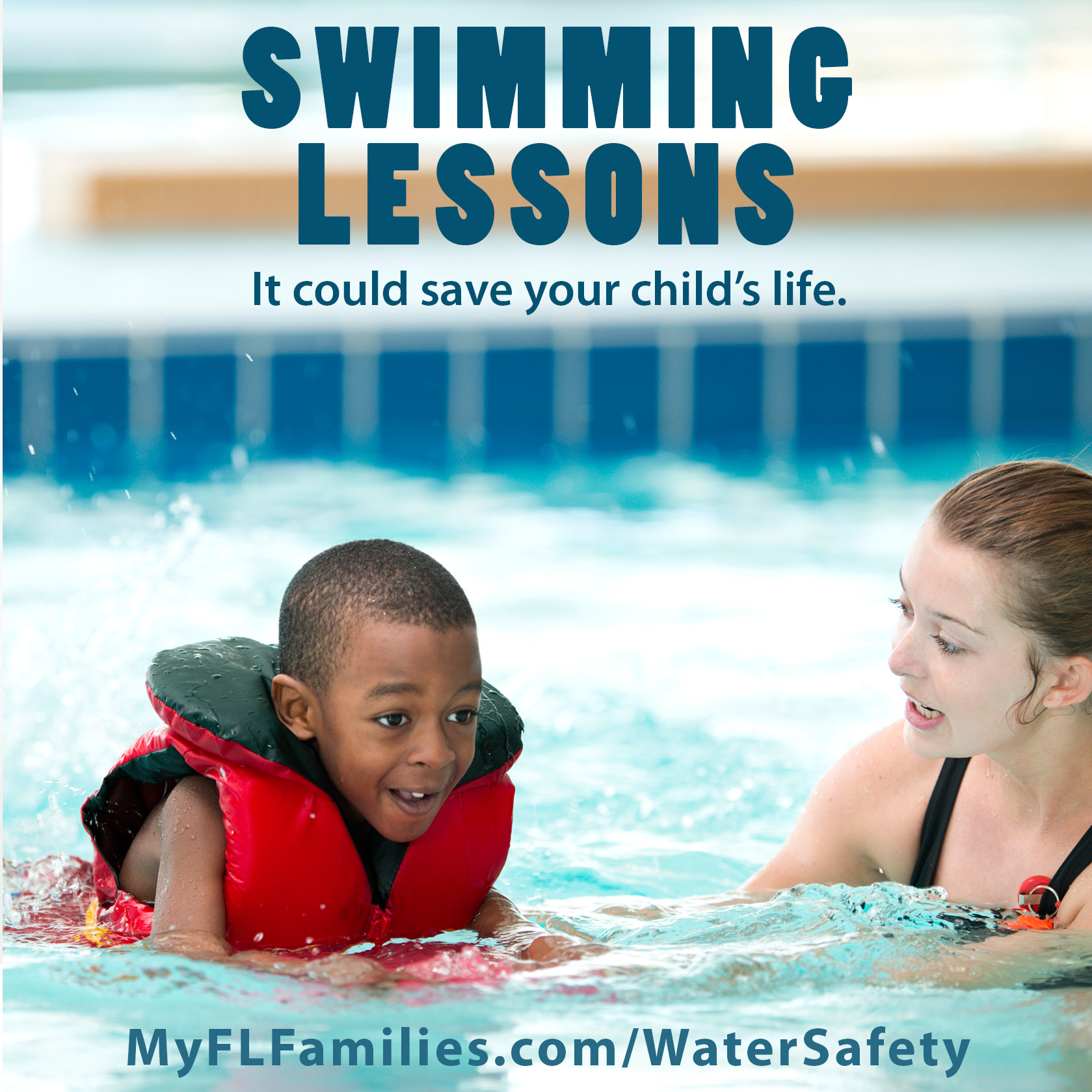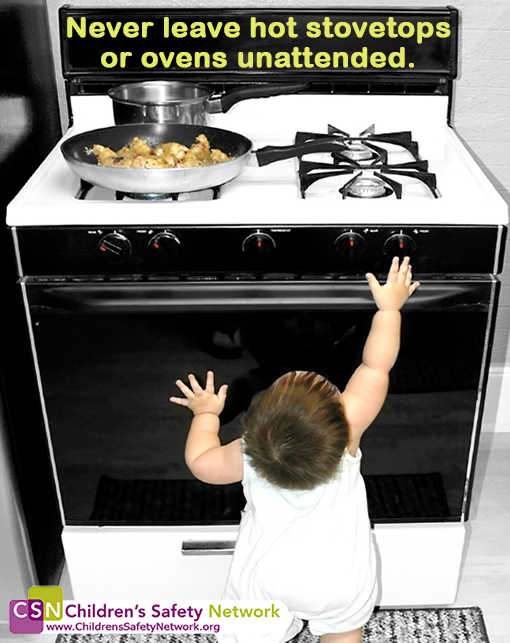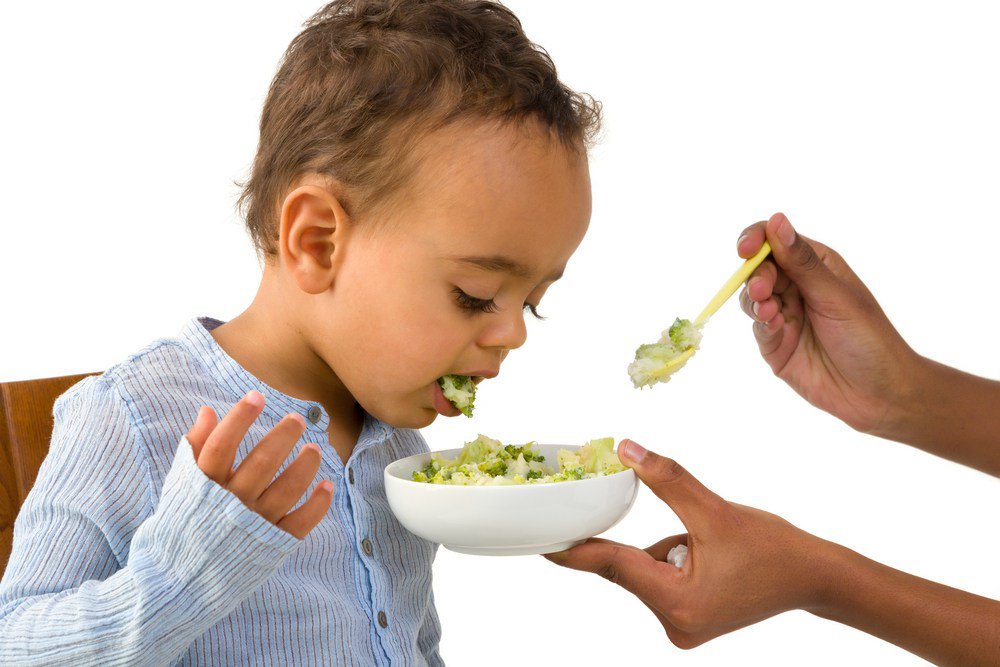If your kids will be anywhere near a pool, beach, or lake this summer, read this article now -- it could save your child's life.
On May 3, 2002, Tom and Sheryl Lazare were unloading their car after a trip to the store when 17-month-old Anya toddled out of the garage and through an open gate leading to the pool area of their Villa Park, California, home.  When they realized she was missing, they called for their older kids and scattered to look for her. Sabrina, then 14, and Foya, then 8, spotted Anya's body in the pool and screamed for help. Sheryl quickly pulled her out and began CPR. Paramedics arrived and rushed her to the hospital, but they couldn't resuscitate her. Anya had been underwater for too long.
When they realized she was missing, they called for their older kids and scattered to look for her. Sabrina, then 14, and Foya, then 8, spotted Anya's body in the pool and screamed for help. Sheryl quickly pulled her out and began CPR. Paramedics arrived and rushed her to the hospital, but they couldn't resuscitate her. Anya had been underwater for too long.
"We try to remember what a happy, bouncy child she was, but there are moments when we just sit there and sob," says Sheryl, who is still tortured by the thought that she and her husband were doing something unimportant when their daughter drowned.
"It happened so fast. She was out of our sight for less than five minutes." Sheryl thinks that Anya fell in because she was trying to reach a blue exercise ball that had been floating in the water. The couple have since had the in-ground pool filled with dirt and turned into a putting green because Anya loved to putt. "We couldn't bear to look at it," Sheryl says.
The reality is grim: Water is a big danger for little kids. According to the Centers for Disease Control and Prevention, every year about 800 children drown -- the number of students on 11 full school buses. Drowning is the leading cause of injury-related death among children ages 1 to 3, and the second-leading cause among kids under 15. Despite these alarming figures, only 34 percent of parents know that water is one of the top killers of kids, according to a survey by Safe Kids Worldwide, a child-safety advocacy group.
"Drowning is quick and silent," says Parents advisor Martin Eichelberger, MD, president and CEO of Safe Kids and director of emergency trauma and burn services at Children's National Medical Center, in Washington, D.C. "Young kids rarely make a big splash, thrash around, or scream for help like you see on TV. They usually fall in head first and sink to the bottom like a rock." A child who's underwater will lose consciousness after two minutes and suffer irreversible brain damage within four to six minutes.
Sadly, poor supervision is to blame for most drownings: Nine out of 10 children who've died in the water were being watched by an adult, according to Safe Kids. "Everyone thinks, 'It won't happen to me because I keep an eye on my children,'" says Maureen Williams, president of the National Drowning Prevention Alliance, in Huntington Beach, California. But small children move fast and can fall into the water in the seconds it takes you to answer your cell phone or grab a towel.
Most toddlers and preschoolers drown in swimming pools, whereas kids ages 5 to 14 are more likely to drown in oceans, lakes, or rivers. (Babies are at greatest risk in bathtubs.) And even when parents know that a child has fallen into a pool or a lake, she can be surprisingly difficult to find. Kelly Hines, of Indianapolis, almost drowned in her family's above-ground pool when she was 13 months old. Wearing a light-pink swimsuit, she walked over to the edge and then disappeared from view. "Our pool was only 4 feet deep, but we couldn't see her," recalls her mother, Susan, who was on the deck with Kelly's twin sister. Luckily, Kelly's dad was standing in the water and able to find and retrieve her in time. "The next day I went and bought her a bright, multicolored swimsuit," Susan says.
Preventing a tragedy requires multiple layers of protection. Here are safety guidelines that every parent should follow.
Always stay within arm's reach. "When your child is in or near the water, you need to keep your eyes on her at all times," says Tom Krzmarzick, MD, medical director of the Regional Pediatric Trauma and Emergency Center at the Children's Medical Center of Dayton. If you need to leave a pool area, take your child with you. Don't let babysitters take her swimming unless you're confident that they'll watch her constantly.
Select swimming areas carefully. Make sure that beaches or lakes are well maintained and supervised by a lifeguard. Stay in the designated swimming area, and don't go into the water if there are strong waves or currents that could pull your child under.
Use proper safety devices. Arm floaties and air-filled tubes aren't approved for safety and won't protect your child against drowning. Insist that your child wear a U.S. Coast Guard-approved life preserver whenever she's on a boat or raft, is near a river, is participating in water sports, or is near open bodies of water.
Don't rely on the lifeguard. Of course, it's best to have a water-safety expert nearby, but lifeguards don't always notice when kids slip under the water, says Dr. Eichelberger. It's up to you to keep your child safe.
Be wary of plastic or inflatable pools. Experts caution against using large kiddie pools because they're too heavy to empty after each use and are usually not protected by fences and covers. If you use a smaller baby pool, be sure to drain it afterwards, and don't leave it outside where it can accumulate rainwater. Watch your child even when he's in very shallow water. "Most parents think that a 3- or 4-year-old can just stand up and get out of a baby pool," says Dr. Krzmarzick. "But if he falls and gets a mouthful or a lungful of water, he can get scared and not know what to do. Even a child that age can drown in a few minutes."
Backyard pools are increasingly popular, but owning one is a major responsibility. In April, 4-year-old twins in Union, New Jersey, snuck out to their pool after their mom had dozed off. They drowned. Take these precautions to protect your kids and any other children who visit your home.
Know where your child is at all times. If she's missing, check the pool first. Most kids who fall into pools do so when their parents are inside and have no idea their children are near the water. "I have five children, and I know how hard it is to keep track of your child 100 percent of the time -- but if you own a pool, you have to," says Dr. Krzmarzick. Emphasize the need for constant supervision to babysitters.
Surround your pool or hot tub on four sides with a fence that is at least 4 or 5 feet high. "This is called isolation fencing, and it prevents direct access to the pool," says Williams. Isolation fencing that's tough for kids to climb on can prevent more than half of pool drownings, according to the American Academy of Pediatrics (AAP). Make sure that the gate leading to your pool is self-closing and self-latching, and that it opens out. Latches should be above a child's reach, and the space between the bottom of the fence and the ground should be less than 4 inches. Never prop open a gate to the pool area.
Set up several roadblocks. Equip doors, gates, and windows that lead to the pool or hot-tub area with locks and alarms. "You should be able to hear a buzzing noise every time the door or gate opens," says Dr. Krzmarzick. It's safest to also invest in a sonar device that sets off an alarm when something enters the water; if that isn't practical, get a floating alarm that goes off if the water is disturbed. Cover your pool with a rigid safety cover (preferably a motorized one) whenever you're not using it, even during swimming season. With an above-ground pool, remove ladders and steps when they're not in use.
Don't leave toys in the pool area or use chemical dispensers that look like toys. Your child might run after a ball, for example, and trip.
"I remember a 2-year-old who rode his tricycle into the pool area and fell off into the water," says Rohit Shenoi, MD, an emergency-room physician at Texas Children's Hospital, in Houston..
Be prepared for an emergency. Keep a phone by the pool so you can call 911. Learn CPR, and make sure your child's caregivers know it too. "The most important factor in saving your child's life is to pull him out of the water quickly and start CPR immediately, even before EMS arrives," says Dr. Shenoi.
Few parents realize that children can die in a pool or hot tub by getting sucked down and trapped in a drain. A child's hair or bathing suit can also get stuck. Since 1985, 34 kids under age 15 have died and 130 have been injured in accidents like this, reports the Consumer Product Safety Commission.
In 2002, 7-year-old Graeme Baker, the granddaughter of former Secretary of State James Baker, became entrapped by a hot-tub drain when she was at a graduation party with her mom, Nancy, and her four sisters. Nancy jumped into the water and tried to pull Graeme out, but the suction was too strong. "I was in a panic and kept coming up for air, yelling for help," recalls Nancy, of McLean, Virginia. It took two men to finally free Graeme, but she didn't survive. Graeme's horrifying death has driven her mother to lobby for mandatory safety standards for drains.
Protect your child by making sure that any pool or hot tub she uses has anti-entrapment drain covers. It should also have at least two drains for each pump, which will reduce the powerful suction if one drain is blocked, says Dr. Shenoi. Single-drain pools, hot tubs, whirlpools, and spas should have safety vacuum-release systems, which automatically release the suction if a drain is blocked. Watch your child closely and make sure she doesn't swim or play near drains. Tie her hair back or have her wear a bathing cap, and make sure her swimsuit fits snugly, with no loose ties.
The bottom line is that drowning is almost always preventable, emphasizes Dr. Eichelberger. "Whenever you're in or near the water, you should be able to reach out and touch your child. Sadly, when a child drowns or is disabled after a near-drowning, parents have to live with the fact that they could have done something to protect him. You never want to be in that position."
Kids are generally not developmentally ready for formal swimming lessons until age 4, according to the AAP. Studies show that starting lessons earlier doesn't help kids learn to swim faster, doesn't lower their risk of drowning, and may give parents a false sense of security. (The AAP doesn't object to classes for babies and toddlers in which parents are also in the water.)
"Your child needs to be ready both physically and mentally," says Thomas Heneghan, a water-safety expert at the American Red Cross, in Washington, D.C. "He needs to have a certain amount of strength and coordination to be able to get in and out of a pool, take direction from the instructor, wait his turn, and cooperate with other children."
Look for a program that has certified instructors and groups kids according to their abilities. It's best for your child to take lessons every year to refresh her skills and learn new ones, but don't let her comfort in the water make you lax about safety. "If a child panics, the skills she's learned may not come back to her," Heneghan says.
About half of all accidental burns that occur each year happen to kids under age 4. That's why you shouldn't leave a small child unattended around hot appliances, such as a grill or a stove, and why you should keep kids at a distance while you're cooking. Also keep sparklers away from children.

How to Treat: First-degree burns are painful and red but don't blister. To care for these minor burns, hold the area under running cool tap water for about five to 10 minutes. There's no need to use topical creams or ointments, and don't apply ice, as this can lead to frostbite and delay healing. Place a loose, sterile dressing over the site, and keep it clean with soap and water as it heals.
Special Concerns: Second-degree burns are deeper and typically blister (don't pop the bubbles). Contact your child's doctor if you suspect this. Third-degree burns are even more serious and appear white, waxy, or black. Often, they are so deep that the area feels numb. These burns require immediate medical attention.
To further help you sidestep these summer spoilers, here's information on recognizing these plants: Poison ivy grows as a vine or shrub in the grass or on trees. Poison oak grows only as a shrub, usually in the western United States. Poison sumac is a tall shrub or small tree found in wooded areas of eastern states.
The good news: the rashes (caused by oils from these plants) aren't contagious. Once the skin has been washed and clothing is removed, the rashes can't spread.
How to Treat: If your child's skin comes in contact with one of these plants, you have a window of about 10 minutes to wash away the rash-causing oil. If you don't catch it in time, a rash may develop within 12 hours. Use topical hydrocortisone cream and an oral antihistamine to calm the itch.
Special Concerns: If the rash involves the eyes or if it covers a large portion of her body, contact your pediatrician. Oral steroids may be recommended for severe cases.
While it’s genuinely fantastic when your little one can finally self-feed, a whole crop of new problems can arise. Here are some solutions to help you with the biggest hurdles:
The problem: My toddler throws more food than she eats
Gravity – it’s a wonderful thing, isn’t it? Your toddler is testing out the world to see how things work, and banging a spoon and flinging a handful of peas are part of this set of experiments. Try these tips for next time:

The problem: My toddler is picky and won’t eat new foods
Toddlers are biologically built to be picky eaters. Through evolution, this trait may have developed because it makes very mobile, but not yet danger-aware, little ones less likely to eat something poisonous (little does your toddler know the steamed broccoli you’re serving is just the opposite). A selective, slightly wary stance towards food is a natural part of toddlerhood.
That being said, the second year of life is an important time to build a healthy relationship to food and expand your toddler’s palate when possible. If you’re introducing solids, your child hasn’t really hit a selective stage yet, so take this as your opportunity to introduce as wide a variety of tastes and textures as you can – this will help you ride the virtually inevitable picky period headed your way.
Keep these tips in mind when up against a picky eater:
Bees are attracted to flowers, so don't put fragrances or floral-patterned clothing on kids. Likewise, don't leave out open containers of food and drink, and if your kid's clothes get stained, change them. Should a bee land on or next to your child, remain calm and gently blow it away.
How to Treat: If your child gets stung, brush the stinger away with the edge of a credit card. Next, apply a salve of one part meat tenderizer to four parts water and leave it on the area for about 30 minutes to neutralize the venom. Then apply cold compresses and topical hydrocortisone cream, and give an oral antihistamine to reduce swelling. You could also apply a paste of baking soda and water.
Special Concerns: Bee stings often look worse the next day -- skin reactions are normal and may last up to a week. But some people have severe allergic reactions to bee stings that include all-over hives, difficulty breathing, dizziness or fainting, and swelling of the lips and tongue. These can be life-threatening reactions that require immediate medical help. If your child has this allergy, his doctor will prescribe an injectable form of epinephrine, a lifesaving medicine.
When outside, cover children with lightweight clothing and use mosquito netting over strollers and infant seats. Ticks are also a concern, so check your child's body for them at the end of each day spent outside.
When choosing bug repellents this summer, know that the most effective products contain DEET because it's proven to repel both mosquitoes and ticks. Products with a DEET concentration of less than 30 percent are safe for kids, but not for babies under 2 months old. Apply the repellent once a day and don't use combination sunscreen/bug repellent products. All-natural repellents, such as lemon eucalyptus and citronella, aren't proven to protect against ticks, nor should they be used in children younger than 3 years. It's safe to apply them on older kids.
How to Treat: Topical antihistamine preparations can help relieve the itch of mosquito bites. If you find a tick on your kid, use tweezers to pull it off by its head. Ticks have to be embedded in the skin for about 24 hours to transmit germs. If you suspect a tick has been on your child for this long, contact your pediatrician.
It's an infection of the outer ear canal, and pain is the earliest symptom. As it progresses, you might see drainage from your child's ear and extreme tenderness when her earlobe or the outer part of the ear is tugged. Because swimmer's ear is caused by germs that invade the ear canal due to excess moisture, dry the outside part of the ears after water play.
How to Treat: Apply prescribed antibiotic drops and curb pool time.
If you're outside at a picnic and can't wash your hands (or your kids' hands), use an antibacterial hand gel. Clean all raw fruits and vegetables, and keep raw meats separate from cooked foods. Wash food-preparation surfaces and utensils well, and cook all food thoroughly. If you're marinating food, make sure it's in the refrigerator or a cooler.
The FDA recommends keeping cold food at a temperature of less than 40 F. Make sure to refrigerate all uneaten food, not just foods containing mayonnaise, after one hour if the outdoor temperature is above 90 F., or after two hours any other time.
How to Treat: Signs of food poisoning include nausea, vomiting, and diarrhea. Usually there's blood in the stool, as well as a fever. If you suspect that your child has it, contact his doctor. Treatment involves fluids, rest, and a bland diet, but the illness may require medical attention.
What better time to stock a first-aid kit than at the start of the summer season, when many accidents occur. While you can't prevent all accidents, you can be prepared. Here is a list of helpful things to include:
Sara DuMond, MD, is a pediatrician, a mom of two young children, and an American Baby adviser.
Copyright © 2008 Meredith Corporation. Originally published in June 2007 issue of American Baby magazine.
All content on this Web site, including medical opinion and any other health-related information, is for informational purposes only and should not be considered to be a specific diagnosis or treatment plan for any individual situation. Use of this site and the information contained herein does not create a doctor-patient relationship. Always seek the direct advice of your own doctor in connection with any questions or issues you may have regarding your own health or the health of others.
One of the most important qualities you want to instill in your children is a deep sense of security in themselves and the world. There are three messages you want your children to get to nurture their developing sense of security.
I will explore #1 today and the other two in subsequent posts.
Build Trust
The first message of security involves your children feeling securely attached to you. The operative word with attachment is trust. Simply put, secure attachment develops in children who learn that they can rely their parents to meet their physical and emotional needs. When they are cold, hungry, or thirsty, they know you are there to provide them with warmth and sustenance. When they are scared, sad, or lonely, they can turn to you for comfort.
This attachment isn't just important for you and your children to develop healthy relationships. The perceptions they develop about their relationship with you, the emotions they feel toward and from you, and the experiences your children have with you become the template for relationships that they will develop in the future.
Imagine children who grow up without that attachment, trust, and sense of security. They learn that others can't be trusted to care for them. Such a world view would have a profoundly negative impact on every aspect of their future lives, including how they come to see themselves and their emotional life, relationships, and strivings. Who they would ultimately become and what they would eventually do would emerge from this dark place of doubt, fear, and need. Children with insecure attachment experience significant separation anxiety when parents leave, yet find little comfort when the parent returns. They are often described as needy and clingy by teachers and other caregivers. In adulthood, they fear intimacy, have difficulty expressing their emotions, lack trust in their intimate relationships, and take rejection badly.
Now consider children who are raised with a strong feeling of attachment with their parents. They come to view their parents as safe, friendly, and predictable people who they can count on to meet their needs. The view of relationships that they would subsequently develop would be one of comfort, interest, and opportunity. Securely attached children separated from their parents with ease and welcomed them back with enthusiasm, and were readily calmed by parents when frightened. In adulthood, these children had generally high self-esteem, were socially competent, able to establish and maintain intimate relationships, and emotionally expressive.
Recognize Your Children’s Uniqueness

Children have distinctive temperaments, moods, emotional styles, and needs. They also send messages in different ways to alert you to their specific needs. You need to learn your children's personalities and the particular messages they send about their needs.
An essential way to build the trust that underlies secure attachment is to interact with your children in ways that are consistent with those unique attributes and messages. If they are shy, you provide them with comfort in social situations. If they are risk takers, you provide reasonable limits to ensure their safety. By doing so, you respond to their needs in ways that are most meaningful and comforting to them. This congruence between your children's needs and your responsiveness sends a powerful message that you understand them and can give them what they need in the way that they need it. Their recognition of your understanding acts as the foundation for that trust and secure attachment. In contrast, when you respond to your children's needs in ways that are out of sync with who they are, their deepest needs are not met and they feel misunderstood, disconnected, and unvalued.
Be Consistent
The importance of consistency, is especially true for establishing secure attachment because your children's trust in you is based on your creating a consistent and predictable world around them. The dangers of inconsistency in attachment behavior is evidenced by what is called disorganized attachment. Children with disorganized attachment demonstrate no clear pattern of attachment behavior, sometimes approaching, other times avoiding, and still other times resisting their parents. They often appear to be disoriented and anxious. Inconsistent responsiveness by parents may contribute to disorganized attachment, for example, quick to respond at one time, but neglectful the next, or loving and supportive at one turn and angry and critical at another. With these mixed messages, children can't predict if, when, or how their parents will respond, creating a state of mistrust, detachment, and insecurity.
When your children see you as consistent in your emotions, behavior, and reactions, you enable them to see you, relationships in general, and the world as predictable and, to a greater degree, controllable. This experience of consistency makes them feel more comfortable and less threatened, resulting in a strong sense of security that will generalize to all aspects of their lives.
This blog post is excerpted from my third parenting book, Your Children are Listening (link is external): Nine Messages They Need to Hear from You (The Experiment Publishing, 2011).